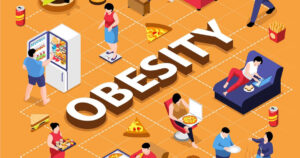
Whether you’re aiming for more productive workouts, higher levels of energy, or losing weight, opting for this low-carb diet known as the ketogenic (keto) diet is a common option, favored by many.
However, deciding on a keto diet plan isn’t a straightforward matter. If you’re used to carb-heavy diets, then settling on a keto diet plan won’t come your way naturally. It could also be particularly hard if you’re a vegan who wants to adopt a keto diet.
But not to worry! This beginner’s keto diet plan will set you on the right path to get yourself ready for success. It’ll give you ideas on what kinds of food to eat when starting out on your keto diet for the first time, including delicious low-carb recipes and a low-carb food list.
The Beginner’s Keto Diet Plan – Basics
A keto diet plan is a way of eating foods high in fat, low in carbohydrates and moderate in protein. It brings to an end the rollercoaster of blood sugar crashes and spikes, enabling the burning of fats in the body.
Keto diet plans focus on a specific ratio of macronutrients, that is, 5 per cent carbohydrates, 25 per cent protein and 70 per cent fat.
The benefits of the keto diet plan and low-carb diets are almost similar, but the keto diet has many more advantages, specifically having amazing outcomes for mental focus, energy levels and weight loss.
Starting A Keto Diet
For beginners, starting a keto diet can be intimidating, but we all need to begin somewhere! Let’s break it down into 6 steps to make the journey simpler. The key is to just start, and you’ll soon find yourself going!
1) Restricting carbohydrates
This is the main and most important point in setting up a keto diet plan. You’ll need to restrict your daily carbohydrates intake to less than 20g net. However, some people may still get away with less than 30g. Your initial target should be under 50g net of daily carbohydrates, although some diets may have targets to stay under 100g per day, such as those designed for people who are more active.
2) Breaking the habit of having 4 to 6 meals daily
Only eat when you feel hungry. You need to get rid of the mindset that you must have at least 4-6 meals a day, or constantly eat snacks. Eating so frequently on a keto diet may have a negative impact on your weight-loss results. By eating fewer carbs and only eating when you’re hungry, you make your keto diet plan much easier to follow as it will act as a natural appetite suppressor.
3) Restricting protein intake
A low-carb or keto diet is not the same as a high-protein diet. While low-carb diets tend to lean towards a higher protein composition, you need to be careful about your daily intake, as excess protein is known to cause stress to your kidneys. Furthermore, excess protein is converted to glucose. Set a goal for daily protein intake, and don’t exceed it.
4) Increasing water intake
Water is a critical component of an effective keto diet plan. Upon eating carbohydrates, any excess is stored in the liver as glycogen, and later bound into water molecules. Low-carb intake depletes the formed glycogen, which then allows your body to burn fat.
When you burn fat, it also means that less water is being stored in your body. This makes your body more susceptible to being dehydrated. You normally need to drink 8 cups of water per day to prevent dehydration; but when following a keto diet, aim for up to 16 cups of water.
5) Eating sufficient fats
In the course of the keto diet, you’ll come to see fat as a variable factor. All you need to understand now is that both protein and carbohydrates are constant factors in a keto diet, while fat is the only variable. That means you can either increase or decrease it to either gain or lose weight.
Maybe you’ve been taught to fear fat, but you don’t have to. Both low-carb and keto diets are high-fat diets, and fat is one of the main sources of energy and serves to satiate your hunger.
6) Exercising Regularly
Although regular exercise isn’t required for keto diets, it is still recommended to help you lose weight faster. Furthermore, it makes you feel better and, importantly, it improves your general health.
A Sample 5-Day Beginner’s Keto Diet Menu
This sample 5-day menu provides less than 50g of carbohydrates a day. However, based on your own needs, you may consider it wise to reduce the amount of carbohydrates even more to achieve ketosis (a process whereby your body burns fats for energy as there aren’t enough carbohydrates to burn).
Monday
Breakfast: Bell pepper stuffed with eggs and cheese
Lunch: Cauliflower rice, salsa, herbs and avocado
Dinner: Pork chop with vegetables
Tuesday
Breakfast: Egg boat and baked avocado
Lunch: Salmon and pesto
Dinner: Coconut chicken
Wednesday
Breakfast: Coconut, walnuts and coconut milk
Lunch: Chicken and Caesar salad
Dinner: Cheesy broccoli with bison steak
Thursday
Breakfast: Mushroom omelette
Lunch: Hard-boiled egg, avocado, blue cheese and turkey
Dinner: Roast chicken and sauteed broccoli
Friday
Breakfast: 2 eggs and sauteed greens
Lunch: Tuna salad, greens and tomato
Dinner: Meatballs with Parmesan cheese and zucchini noodles



